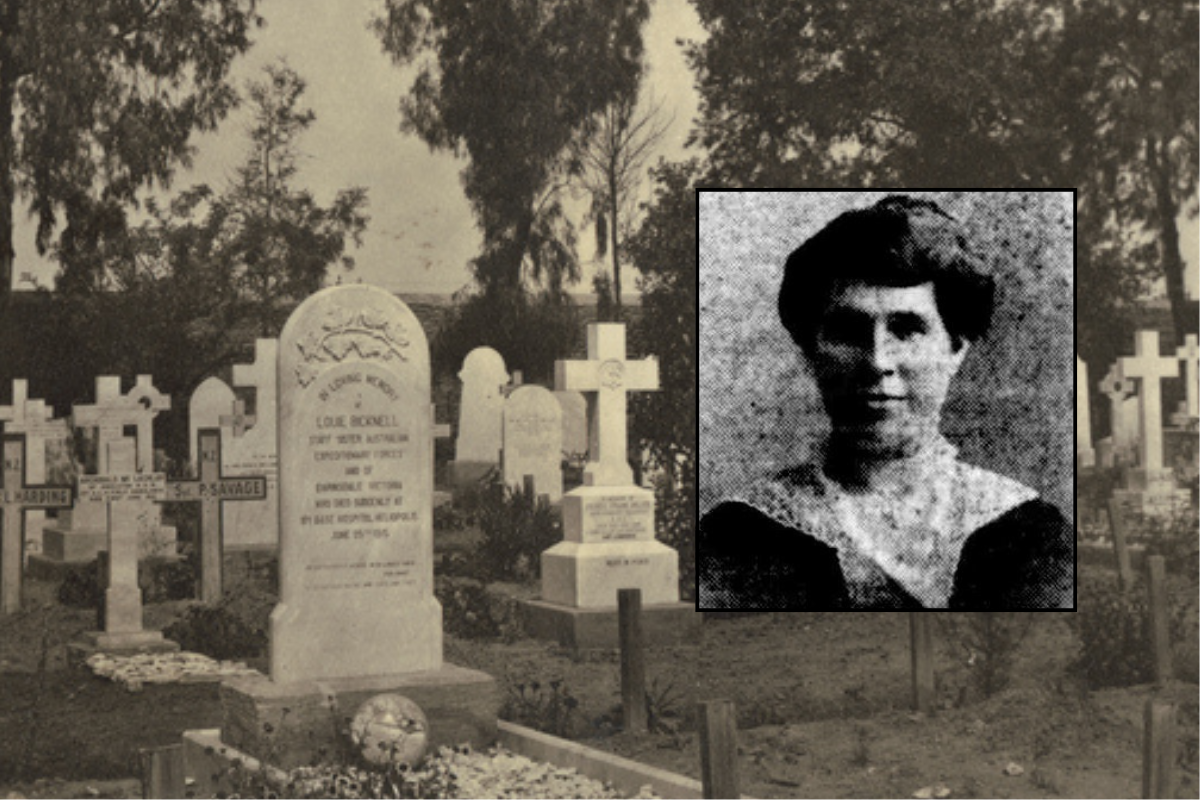Today, on Anzac Day, we salute the many, many thousands of East Gippsland people who served Australia during times of conflict.
We salute those who paid the ultimate price so far from home, and those who returned to Australia – some safe and well, others with wounds that brought them into contact with hospitals like Bairnsdale Regional Health Service in the years and decades that followed.
One of those East Gippsland people who gave their lives in active service was Louisa Bicknell, a Bairnsdale nurse who is widely acknowledged as the first Australian nurse to die in Egypt during World War I.
Louisa Annie Bicknell was born in 1879 and grew up on her family’s farm near Elmore in northern Victoria.
She was educated in Kyneton and worked there as a dressmaker and Sunday school teacher before she answered the call to nursing.
She trained as a nurse at the Mooroopna and worked in a range of positions at Creswick Hospital, the Royal Women’s Hospital in Melbourne and the Melbourne District Nursing Society before coming to Bairnsdale around 1907 to work at Sister Kate Massey’s Private Hospital in Bairnsdale. Some accounts suggest she established the hospital.
The young nurse quickly became part of the Bairnsdale community. She was a parishioner at St John the Baptist Anglican Church and was among the first members of the Bairnsdale branch of the Red Cross.
She later went on to run the hospital in partnership with a fellow Mooroopna Hospital trainee, Annie Williams.
But she gave it all up to enlist for service in World War I with the Australian Army Nursing Service on 10 April, 1915 – just two weeks before the ill-fated invasion at Gallipoli.
Seven weeks later, she arrived in Egypt to start work at the 1st Australian General Hospital in Cairo’s Palace Hotel, where she and a dedicated team treated many wounded men from the battlefield at Gallipoli.
Within weeks, she was dead. A scratch on her left hand became infected as she tended to the wounded in the hospital’s surgical ward.
Six days after the infection set in, in the early hours of 25 June 1915, she died from septicaemia (blood poisoning), aged 36.
Louisa Bicknell was buried with full military honours in the Cairo War Memorial Cemetery.
On 30 June 1915, The Bairnsdale Advertiser reported that Rev. AEF Young of St John the Baptist told parishioners at the end of his Sunday service: “It is both strange and sad that she, a non-combatant, and one who so recently left our midst, should be the first resident of the town to give her life for her country; and this she has done as really as if she had fallen on the field of battle.”
Writing home about Louisa’s death, her 1st Australian General Hospital nursing colleague Mabel Pilkington, said she was with Louisa when she died and described her as “one of the brightest, healthiest, and most unselfish nurses I have ever known”.
“She was as brave as any fighting soldier, and said when she was dying, ‘How hard it is to die with so little accomplished, but I would go through it again to help, and it is all in the game,’“ she wrote.
An unnamed lane near present-day Bairnsdale Regional Health Service was named Bicknell Lane in Louisa’s honour in 2022.
The portrait image is of Louisa Bicknell was published in the Bairnsdale Advertiser in July 1915 and was obtained through the National Library of Australia’s Trove collection. The photograph of her resting place was taken later in 1915 by Staff Sergeant Ernest George Hewish, 3rd Australian General Hospital. Source: Australian War Memorial.

